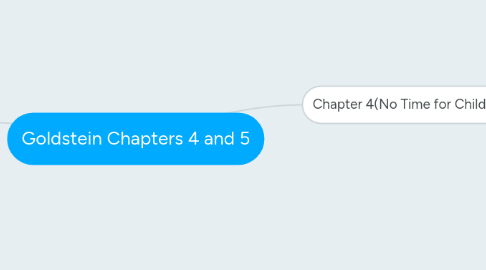
1. Chapter 4(No Time for Childhood)
1.1. Pedro Paulo
1.1.1. Children
1.1.1.1. City Walls
1.1.1.1.1. Street Children
1.1.1.1.2. -death squads exterminate -usually off-duty police -killed homeless children -ambivalance by upper class
1.1.1.2. -to protect the middle and upper classes from the perceived threat of growing violence in the street
1.1.2. -in many cases, the women in Gloria's network spend their time raising their employer's children, being forced to leave their own children with someone else -Gloria attributes his to the loss of Pedro to "the street" -Pedro was seduced by the idea that "successful " gang members built wealth and status for themselves
1.2. Gloria's son, killed due to drug-related activities thought that the job of the man was to put food on the table; if this is done, he may have as many women as he wants, hated abortion, double standard on fidelity
2. Chapter 5 (State Terror, Gangs, and Everyday Violence in Rio de Janeiro)
2.1. Violent Crime
2.1.1. -worst in the poorest communities -favelas have reputation for harboring criminals -cycles of calm and violence
2.1.2. Drug-Trafficking
2.1.2.1. -favelas are seen as high-crime areas that are controlled by drug traffickers
2.1.2.2. Dimer
2.1.2.2.1. -"good bandit" -seen as normal aspects of community life -eventually murdered by members of his own gang
2.1.2.3. Ivo
2.1.2.3.1. -before Dilmer, one of the founding fathers of the favela -Lulu, a corrupt police officer, offered Ivo protection
2.1.2.4. Oppositional culture
2.1.2.4.1. -response to long-term oppression
2.1.2.5. Disdain for the police
2.1.2.5.1. - in favela - different in upper and middle class; immunity and impunity to those with status - violence is normalized, as well as corruption
2.1.2.6. Criminalization of the poor
2.1.2.6.1. - law belongs to the elite - the poor internalize these beliefs, causing confusion -the lack of alternatives lead to the paradoxical position of supporting violent police actions
2.1.2.6.2. Parallel states
2.1.2.7. Gangs
2.1.2.7.1. - in essence, gangs become more than just drug traffickers, they become protectors and judges
2.1.2.7.2. Religious conversion
2.1.2.8. "Police-Bandits"
2.1.2.8.1. -both gang-members and police brought the possibilty of violence -workers view the police as colluding with criminals
2.1.2.8.2. Revenge
2.1.2.9. Private Matters
2.1.2.9.1. -sexual abuse and violence are addressed within the system -gang memebers and police respond to sexual abuse, adultery, enforced gun-control for anyone who was not part of the gang, and retaliate for theft -populations in these areas are willing to accept any form of justice, as long as it is directed at the right person
2.1.2.10. Brown Zones
2.1.2.10.1. -local gangs provide alternative rule of law -lack of trustworthy police, minimum wage, decent employment, health-care
2.1.2.11. Stark difference in threat of violence in classes
2.1.2.11.1. -obviously, poorer neighborhoods much more violent -intentional homicides
2.2. Local Gangs led by "reasonable persons"
2.2.1. -this would change the cycle if this person was killed -Dilmar -kept other gangs from invading, mediated relationships with police -middle-class and elite drug consumption fuel gang activity
2.2.2. Seduction
2.2.2.1. -offer young men the promise of belonging and decent "wages"
2.2.3. For middle and upper classes, some semblance of law exists
2.2.3.1. -not always reliable -blue zones-high degree of state presence, functioning legal system -green zones- high degree of territorial penetration and lower state functioning -brown zones-very low state functioning, state is unable to enforce its legality
2.2.4. working class are most often the victims of police violence
